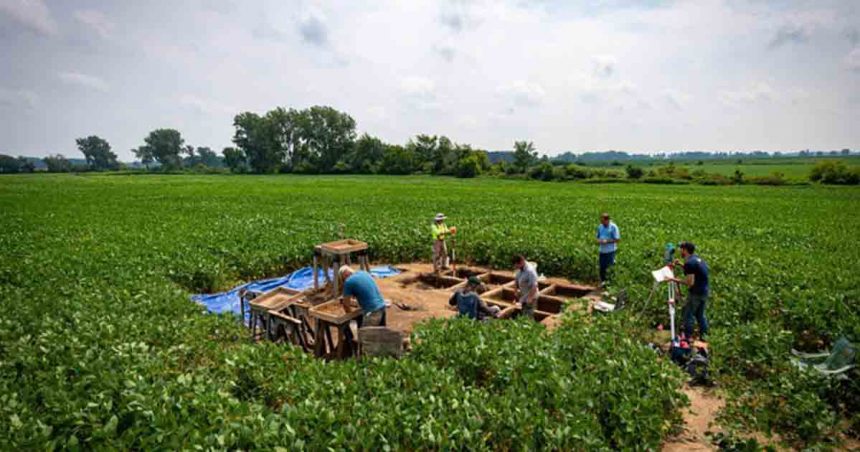Archaeologists have recently unearthed a 13,000-year-old campsite in the Great Lakes region, shedding light on the mysterious and nomadic lives of the Clovis people. The Belson site, located in southwest Michigan, provides valuable insights into their way of life. Lead researcher Brendan Nash explains that through the artifacts found at the site, we can track the Clovis people as they lived and traveled across the landscape.
The Belson site was a seasonal campsite where Clovis groups returned each year for several seasons. Evidence suggests that they moved between central Indiana and Michigan, using the campsite to hunt and process meat during the warmer months. Tools and traces of animal proteins found at the site reveal the importance of this location for their seasonal activities.
One of the key findings at the Belson site is the discovery of spearheads featuring Clovis points, used to hunt a variety of animals. The presence of tools made from chert, a stone originating nearly 400 miles away, suggests that the Clovis people engaged in long-distance trade networks. This trade may have connected different groups across the continent.
Analysis of ancient animal proteins found on the tools reveals a diverse diet, contrary to the popular notion that Clovis people were strictly big game hunters. The evidence from the site also suggests that the Clovis people were highly mobile, migrating between regions based on the seasons. This movement allowed them to exploit resources in different environments throughout the year.
Ultimately, the Belson site provides a snapshot of a way of life that disappeared long ago, offering insights into the early presence of humanity in North America. The site’s discovery is a significant step in our understanding of the Clovis people and their adaptable culture that thrived in challenging environments.






